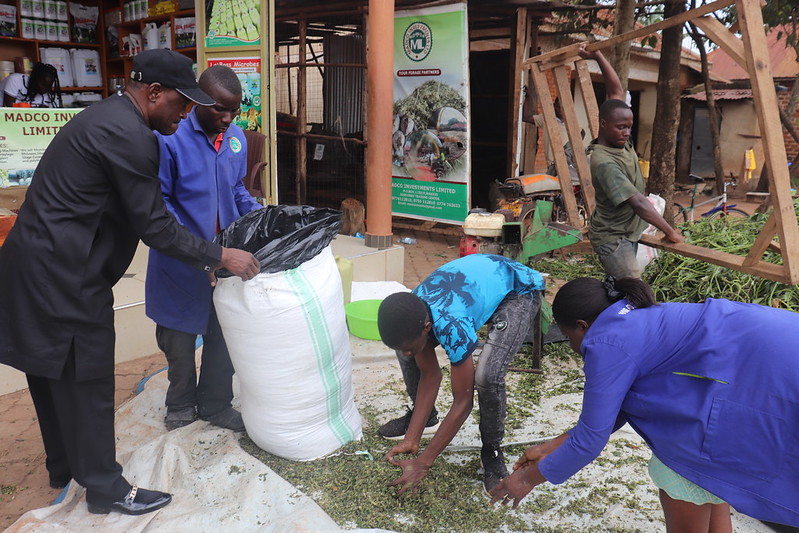
By Ekouya Suzanne HOUEFONDE
Urban and peri-urban farmers are poised to capitalize on the increasing urban population, projected to reach 68% of the global population by 2050.
As food demand rises, urban farmers can optimize limited spaces to tap into this growing market.
However, they face significant challenges, including insufficient production space and, for livestock farmers, the scarcity of quality feed.
To address the livestock feed gap, especially for urban farmers, the International Potato Center (CIP) and the International Livestock Research Institute (ILRI) developed the sweetpotato silage technology.
This innovative approach allows urban farmers to supplement livestock feed with sweetpotato silage, increasing milk yield by 20% for dairy cows and weight gain of 15% in pigs.
Sweetpotato silage is made from non-marketable sweetpotato roots and vines often left in the gardens as residues.
In Uganda, traders frequently cover sweetpotato roots with vines during transport to urban markets.
These vines contribute to significant urban waste but can be transformed into sweetpotato silage.
Making sweetpotato silage is easy and can be done by women, men, and youth alike.
It begins with chopping fresh sweetpotato vines and roots into small pieces, then wilted for about two hours to reduce moisture content and enhance the ensiling process.
For every 100 kg of vines, approximately 10 kg of maize bran is added to improve fermentation and boost the feed’s energy content.
The silage can be stored in sturdy black polythene tubing (1.5m long, 600-800 mm gauge) or a drum, ensuring all air is excluded to maintain an airtight environment.
While traditional silage is ready for feeding livestock after 21 days, recent innovations of adding yeast and microbes in silage have shortened this period to just four days.
When stored properly in a cool, ventilated area away from direct sunlight and rodents, sweetpotato silage can last up to three years, offering a sustainable feeding supplement solution for livestock.
The African Development Bank, through its programme, Technologies for African Agriculture Transformation (TAAT), in collaboration with the CIP, has trained youth and women groups in urban and peri-urban areas of Uganda, particularly around Kampala, to harness the value of sweetpotato silage.
These groups benefit in multiple ways: they produce sweetpotato silage for their livestock, sell silage, offer silage-making services to clients on their farms, and train other farmers in sweetpotato silage production.
This year alone, over 200 MT of silage have been produced.
One such success story is Martha Namabiro, a female youth introduced to silage-making through her group, Bavubuka Twekembe.
Martha has embraced sweetpotato silage as her business and employs over 20 youths to meet the growing demand.
Through her silage business, she earns over USD 500 per month.
Martha has expanded her business by opening a livestock input shop and continues to innovate to enhance the quality and storability of her silage.
Frequently called upon to collect residual vines from trading centres and sweetpotato farmers in Kampala, she exemplifies the potential of sweetpotato silage technology.
TAAT continues to scale sweetpotato silage as part of the technologies promoted in the Orange-fleshed sweetpotato (OFSP) value chain.
OFSP is a high-yielding, early maturing crop rich in beta-carotene (pro-Vitamin A), making it an excellent carbohydrate source for urban farmers with limited land, enabling them to grow a nutritious crop that meets their food security and nutrition needs.












